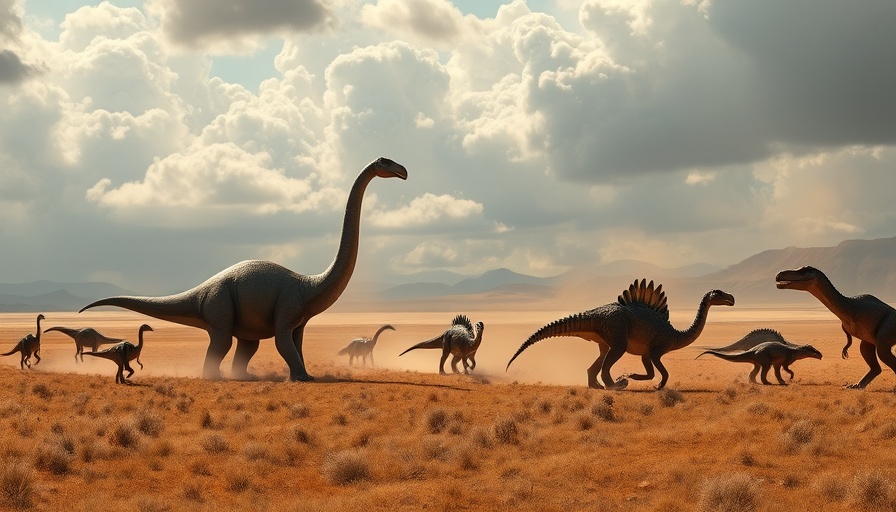
Understanding Ancient Diseases: Dinosaurs vs. Pathogens
Long before the catastrophic Chicxulub asteroid event brought an end to the age of dinosaurs, these colossal creatures faced numerous challenges, including a potentially lethal bone disease. Recent findings from Brazil reveal that many of these magnificent sauropods suffered from osteomyelitis, a severe bone infection that may have posed a significant threat during the late Cretaceous period.
Unearthing Fossils: A Glimpse into Dinosaur Health
Fossils from six ancient sauropods, discovered in the "Vaca Morta" site in São Paulo, show evidence of osteomyelitis—a disease still affecting mammals, birds, and reptiles today. The environmental conditions of ancient Brazil, characterized by vast shallow rivers and stagnant pools, provided a fertile ground for the pathogens to thrive. As lead author Tito Aureliano highlights, the geological makeup of the region likely facilitated the rapid spread of disease among the local dinosaur population.
The Science Behind Osteomyelitis and Its Impact on Dinosaurs
Osteomyelitis is primarily caused by pathogens such as bacteria and fungi. The lesions present on the bones of these dinosaurs lack signs of healing, suggesting the infections were aggressive and potentially fatal at the time of death. The chaotic architecture of the lesions implies that the disease advanced swiftly, varying in manifestation based on the pathogen and individual dinosaur. This information adds a surprising layer to our understanding of the life—and death—of dinosaurs, showcasing that their existence was not just about survival against predators but also battling invisible adversaries.
Environmental Influences on Health: Lessons from the Past
The conditions in which these sauropods thrived are crucial to understanding their health challenges. Their preference for wet ecosystems not only supported their massive bodies but also introduced them to various pathogens. Ancient ecosystems were intricate, and their health was intertwined with the environment—an ecological fact still relevant today. By analyzing the relationship between ancient environments and health, we can draw parallels to modern-day biodiversity and disease transmission.
Modern Implications: What Dinosaurs Teach Us About Disease
This study hints at significant implications for modern wildlife management and conservation. Understanding how past ecosystems influenced health can help address current threats to biodiversity. Modern species, like the birds and reptiles that carry similar diseases today, face many challenges reminiscent of those that plagued their ancient relatives. Tracking and managing diseases in wildlife are paramount, especially in an era of climate change and habitat destruction.
Cross-Disciplinary Insights: Bridging Paleontology and Modern Science
As the fields of paleontology and modern medicine continue to converge, we find ourselves with a wealth of knowledge that informs both historical understanding and contemporary practices. The study of ancient diseases opens doors to uncovering evolutionary trends in pathogens, possibly offering insights into human health as well. For example, the nature of infections in these titanic creatures may inform medical research today on how similar diseases evolve and adapt.
In conclusion, the fossil records not only bring dinosaur life to the forefront but also highlight the paramount role of diseases in shaping their existence. By delving into their past, we gain valuable lessons that extend beyond mere curiosity about extinct species and inform our perspectives on health in both wildlife and human populations.
 Add Row
Add Row  Add
Add 




Write A Comment